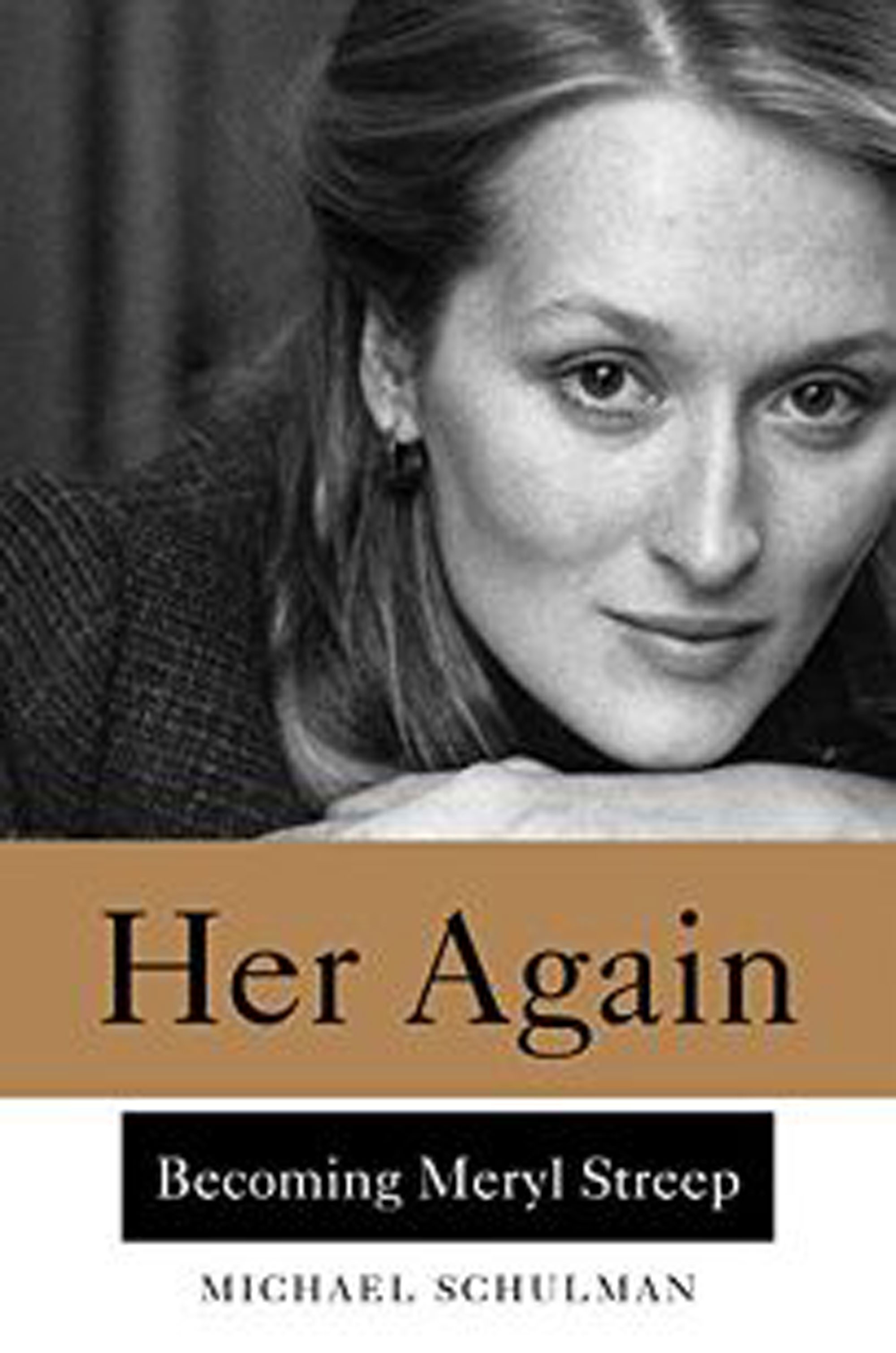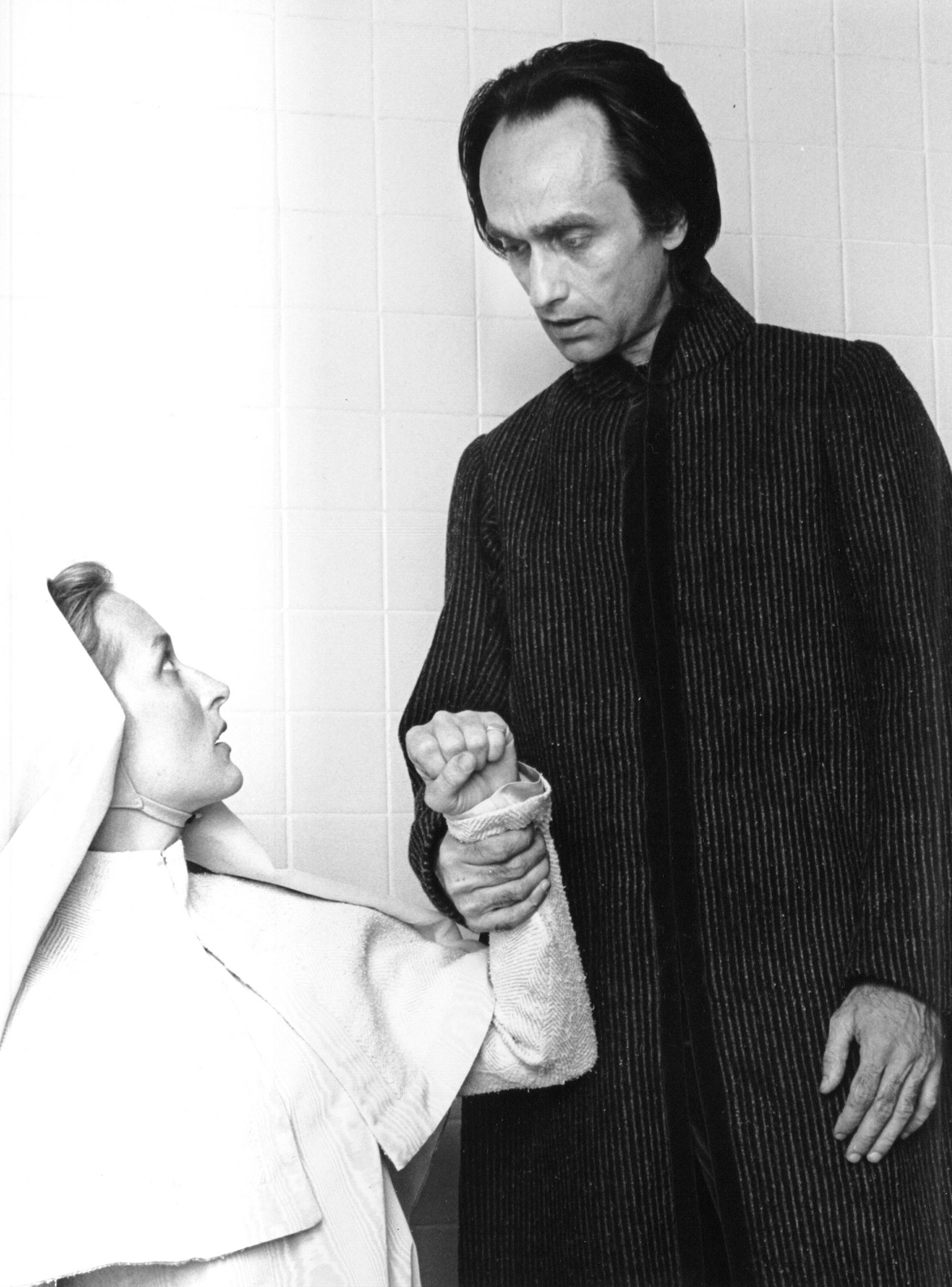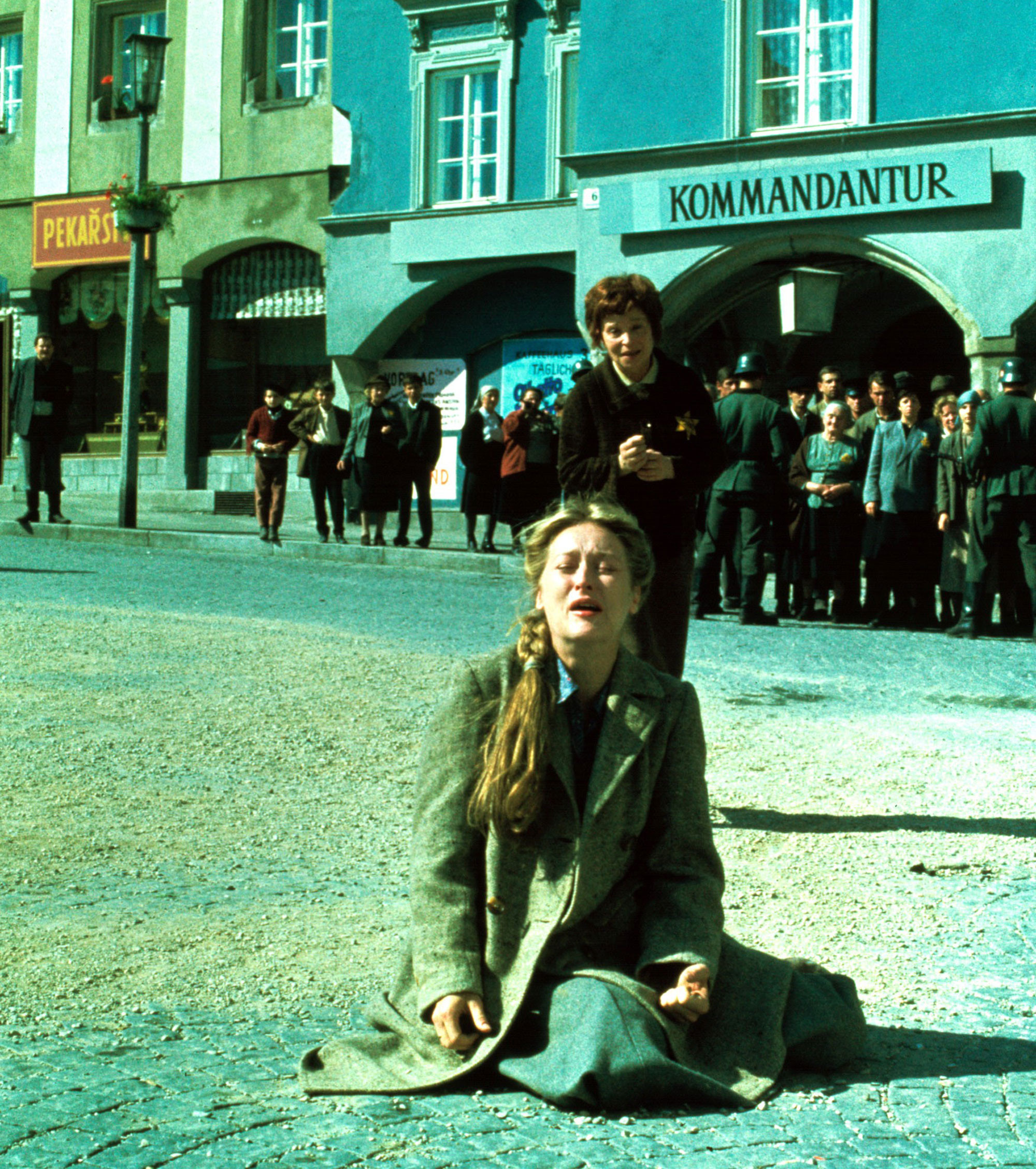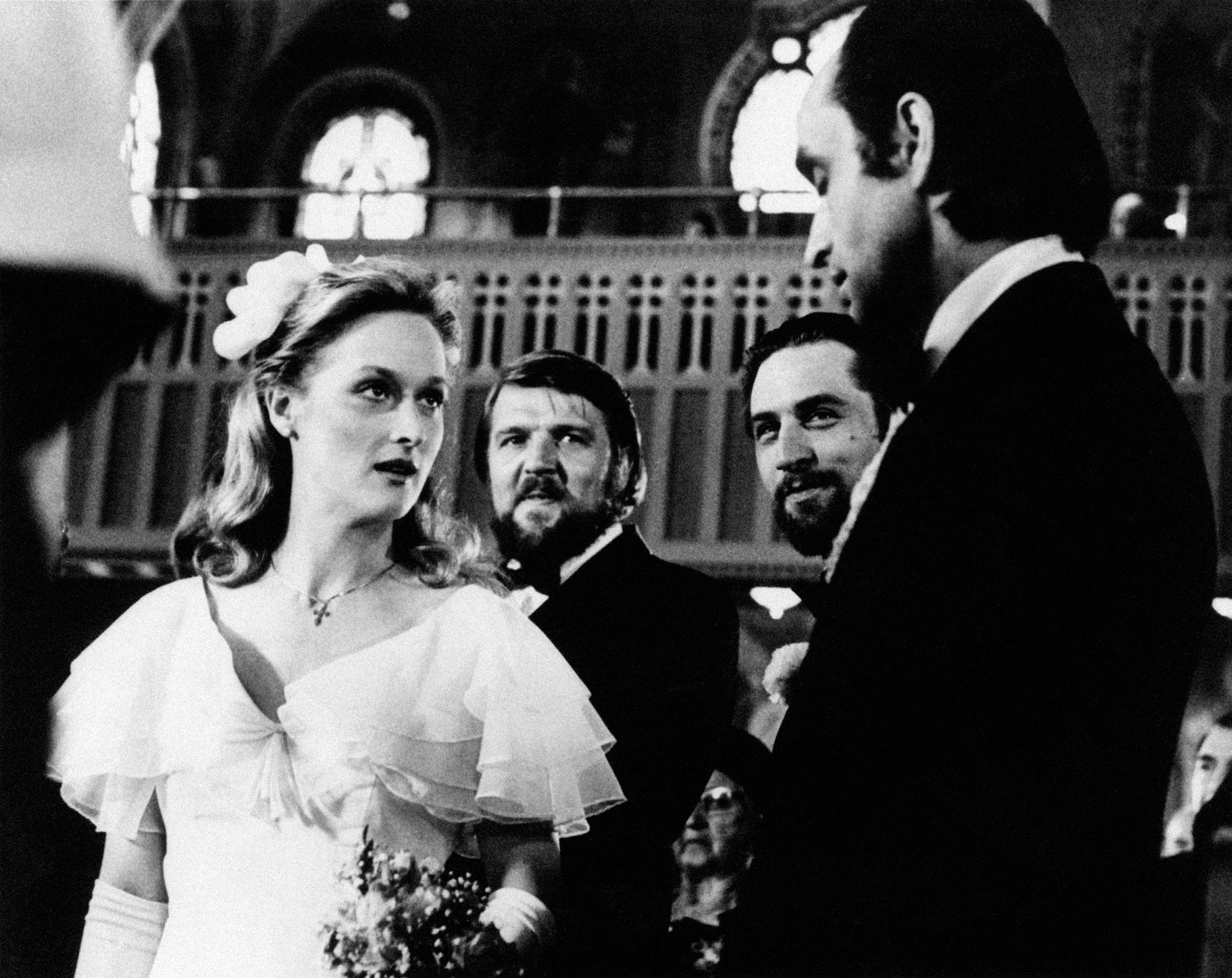In the annals of Hollywood love stories, few are as poignant and heart-wrenching as that of John Cazale and Meryl Streep. Their romance, though tragically short-lived, profoundly shaped Streep, both as an actress and as a person. In 1978, as Meryl Streep stood on the cusp of becoming the cinematic icon we know today, she was simultaneously grappling with the impending loss of her partner, the immensely talented actor John Cazale. This pivotal year, meticulously explored in Michael Schulman’s biography “Her Again: Becoming Meryl Streep,” served as a crucible, forging the resilient and empathetic artist the world would come to admire.
Streep, then a vibrant 29-year-old making waves in the New York theater scene, shared a loft in Franklin Street with Cazale. Fourteen years her senior, Cazale was already a revered figure among actors, a legend in his own right despite lacking conventional stardom.
 John Cazale and Meryl Streep biography "Her Again" book cover.
John Cazale and Meryl Streep biography "Her Again" book cover.
Al Pacino, a close friend and admirer of Cazale’s talent, famously stated, “I learned more about acting from John than anybody. All I wanted to do was work with John for the rest of my life. He was my acting partner.” This sentiment underscores the profound respect and influence Cazale commanded within the acting community.
Their paths intertwined in 1976 during a Central Park production of Shakespeare’s “Measure for Measure.” While Cazale wasn’t a typical movie star, his reputation within the industry was stellar. Directors recognized a unique and compelling talent, making him a sought-after collaborator for significant projects.
Cazale’s filmography, though brief, is astonishingly impactful. He is best known for his portrayal of Fredo Corleone in “The Godfather” and “The Godfather Part II.” He also delivered memorable performances in lead roles in “The Conversation” and “Dog Day Afternoon.” Remarkably, every single film he starred in received a nomination for Best Picture at the Academy Awards, with three ultimately winning, a testament to his impeccable film choices and the quality of his performances.
Sidney Lumet, who directed Cazale in “Dog Day Afternoon,” noted, “One of the things I loved about the casting of John Cazale was that he had a tremendous sadness about him. I don’t know where it came from; I don’t believe in invading the privacy of the actors I work with or getting into their heads. But my God, it’s there — every shot of him.” This inherent melancholy, coupled with his intense dedication to his craft, defined Cazale’s on-screen presence.
Schulman’s biography describes Cazale’s approach to life and work as deliberate and unhurried: “Time moved differently for John Cazale. Everything went slower. He wasn’t dim, not by a long shot. But he was meticulous, sometimes maddeningly so.” This meticulous nature earned him the nickname “20 Questions” among directors, owing to his deep need to understand every facet of his characters’ backstories. Pacino recounted how even a simple dinner with Cazale could become an extended affair, highlighting Cazale’s tendency to savor every moment and detail.
Adding to his unique persona were his distinctive looks, perfectly suited to the character-driven cinema of the 1970s: a slender build, high forehead, prominent nose, and those unforgettable, sad, dark eyes.
Streep was immediately captivated by Cazale. The attraction was mutual and equally powerful.
 Meryl Streep and John Cazale in "Measure for Measure" Shakespeare in the Park.
Meryl Streep and John Cazale in "Measure for Measure" Shakespeare in the Park.
Actor Marvin Starkman recalled, “Once he was in that play, the only thing he talked about was her.” Cazale, in both appearance and demeanor, was unlike anyone Streep had previously encountered. She later described him as having a unique “specificity,” along with a profound “humanity,” “curiosity about people,” and “compassion.”
Despite Cazale’s fame, they were both still navigating the precarious world of working artists. They frequented Little Italy restaurants where Cazale’s Fredo Corleone fame often resulted in complimentary meals. Playwright Israel Horovitz described them as a “quirky couple,” remarking on their unconventional attractiveness and the striking presence they possessed together.
Their romance progressed rapidly, described by Schulman as moving “as fast as John moved slow,” and they soon established a home together in Cazale’s Tribeca loft. Within the New York theater community, they were admired as an ideal pairing – Streep, the generation’s most naturally gifted actress, and Cazale, the most naturally gifted actor, both under the patronage of the legendary director Joe Papp.
However, their idyllic world was shattered in May 1977. Cazale, then in previews for “Agamemnon,” had been experiencing illness severe enough to miss performances. Papp, concerned for Cazale’s health, arranged an emergency appointment with his personal physician. The diagnosis delivered to Streep and Cazale, alongside Joe and Gail Papp, was devastating: terminal lung cancer that had metastasized throughout Cazale’s body.
Gail Papp described the moment of diagnosis as feeling “like you’ve been struck dead on the spot.” Schulman writes of Cazale’s initial silence, mirrored briefly by Streep. Yet, Streep’s inherent resilience quickly surfaced. She broke the silence, asking, “So, where should we go to dinner?” This response, in the face of unimaginable grief, speaks volumes about her strength and pragmatic approach to adversity.
Cazale withdrew from his play immediately. Streep, simultaneously starring in the musical “Happy End,” displayed no outward signs of distress to her castmates. Cazale would occasionally visit the theater, still indulging in his cigars. Instead of reprimanding him, Streep subtly established her dressing room as a smoke-free zone, demonstrating a maturity and grace beyond her years. Actor Christopher Lloyd observed her “tough love” approach, noting, “She didn’t let him malinger.”
They attempted to conceal the severity of Cazale’s condition from those outside their inner circle. Even Cazale’s brother, Stephen, remained unaware until an alarming incident after a lunch in Chinatown when Cazale coughed up blood on the sidewalk. Al Pacino accompanied Cazale to radiation treatments, anxiously hoping for a more favorable prognosis. Cazale himself remained optimistic about recovery, and when he expressed a desire to return to work, Streep accepted a role she personally disliked to remain by his side.
Streep characterized her role in the film, “The Deer Hunter,” as representing “essentially a man’s view of a woman,” describing her character as “extremely passive, she’s very quiet, she’s someone who’s constantly vulnerable.” This character was in stark contrast to Streep’s own personality. Nevertheless, “The Deer Hunter” presented Cazale with the opportunity to act alongside Robert De Niro in a significant film addressing the Vietnam War.
The filmmakers championed Cazale’s casting, even when the production company, EMI, pressured them to replace him due to prohibitive insurance costs associated with a terminally ill actor. Director Michael Cimino recounted the intense struggle, stating, “I was told that unless I got rid of John, [they] would shut down the picture. It was awful. I spent hours on the phone, yelling and screaming and fighting.” The widely circulated story suggests that Robert De Niro ultimately intervened, covering Cazale’s insurance costs, although De Niro has neither confirmed nor denied this. De Niro acknowledged Cazale’s deteriorating health but emphasized his commitment to having him in the film, saying, “He was sicker than we thought, but I wanted him to be in it.”
The production of “The Deer Hunter” was completed, but Streep yearned to cease working and devote herself entirely to Cazale. However, mounting medical expenses necessitated her continued employment. Reluctantly, she accepted the lead role in the nine-hour television miniseries “Holocaust,” a project she took solely for financial reasons.
 Meryl Streep in "Holocaust" TV miniseries.
Meryl Streep in "Holocaust" TV miniseries.
Filming for “Holocaust” took place in Austria, a journey Cazale was too weak to undertake. Schulman describes Streep’s demeanor during this period as “cheery professionalism,” masking her inner turmoil. She later described the material as “unrelentingly grim,” particularly the location shooting at an actual concentration camp, which she found deeply disturbing. Extended shoot days prolonged her separation from Cazale, each day spent in Austria feeling like an irreplaceable loss. “I was going crazy,” she later admitted. “John was sick, and I wanted to be with him.”
Director Marvin Chomsky recalled Streep’s eagerness to complete her final scene and return to New York, noting, “I mean, I don’t even think we had a moment to say goodbye.” Upon her return, Streep found Cazale’s condition significantly worsened.
For the subsequent five months, Streep effectively withdrew from her professional life, dedicating herself entirely to Cazale’s care. His cancer had spread to his bones, causing increasing weakness. Streep accompanied him to every medical appointment and radiation treatment, maintaining an unwavering facade of hope. Schulman observes, “She was always a strong-willed, persistent, hopeful person, and I think she just applied all her spirit and strength to taking care of him. She wasn’t one to create drama around it or draw attention to herself. She just bore down and did what needed to be done.”
Streep later reflected that this period of intense closeness provided a strange sense of protection. “I was so close,” she explained, “that I didn’t notice the deterioration.” She confided in very few, sharing her true emotional state in a letter to her former Yale drama teacher, Bobby Lewis. She wrote of her beau’s serious illness and hospitalizations, expressing her constant worry and the exhaustion of “pretending to be cheery all the time.”
In early March 1978, Cazale was admitted to Memorial Sloan Kettering. Streep remained constantly at his bedside. On March 12, 1978, at 3 a.m., Cazale’s doctor delivered the devastating news: “He’s gone.” Schulman recounts Streep’s initial disbelief and desperate attempt to revive him, “Meryl wasn’t ready to hear it, much less believe it. What happened next, by some accounts, was the culmination of all the tenacious hope Meryl had kept alive for the past 10 months. She pounded on his chest, sobbing, and for a brief, alarming moment, John opened his eyes. ‘It’s all right, Meryl,’ he said weakly. ‘It’s all right.’ ” He then closed his eyes and passed away. Streep’s immediate call was to Cazale’s brother, Stephen, her grief pouring out in sobs as she uttered, “I tried.”
The year of Cazale’s death paradoxically marked a period of immense professional success for Streep. She won an Emmy for “Holocaust,” received an Oscar nomination for “The Deer Hunter,” and secured the career-defining role in 1979’s “Kramer vs. Kramer,” which would earn her her first Academy Award. She also starred as Kate in Shakespeare in the Park’s “The Taming of the Shrew.” She had undeniably become a star.
However, Cazale’s death and the profound suffering she endured transformed her deeply, both personally and artistically.
 Meryl Streep and John Cazale in "The Deer Hunter" movie.
Meryl Streep and John Cazale in "The Deer Hunter" movie.
Her portrayal of Kate in “The Taming of the Shrew” took on a new dimension. Instead of a woman to be tamed, Streep interpreted Kate as someone who discovers the profound fulfillment in selfless love and devotion. “What I’m saying is, ‘I’ll do anything for this man,’ ” Streep explained at the time. She spoke of love as service and duty, concepts often overlooked in a narcissistic age, suggesting that “duty might be a suit of armor you put on to fight for your love.”
Despite her subsequent legendary career, marked by a record-breaking 19 Academy Award nominations and three wins, Streep’s friends and fellow actors often point to her unwavering devotion to Cazale as the most defining aspect of her character. Joe Papp affirmed, “She took care of him like there was nobody else on Earth. She never betrayed him in his presence or out of his presence. Never betrayed any notion that he would not survive.” Al Pacino echoed this sentiment, stating, “When I saw that girl there with him like that I thought, ‘There’s nothing like that.’ I mean, that’s it for me. As great as she is in all her work, that’s what I think of when I think of her.” The love story of John Cazale and Meryl Streep remains a testament to enduring love in the face of tragedy and the formative power of loss in shaping an extraordinary life and career.

